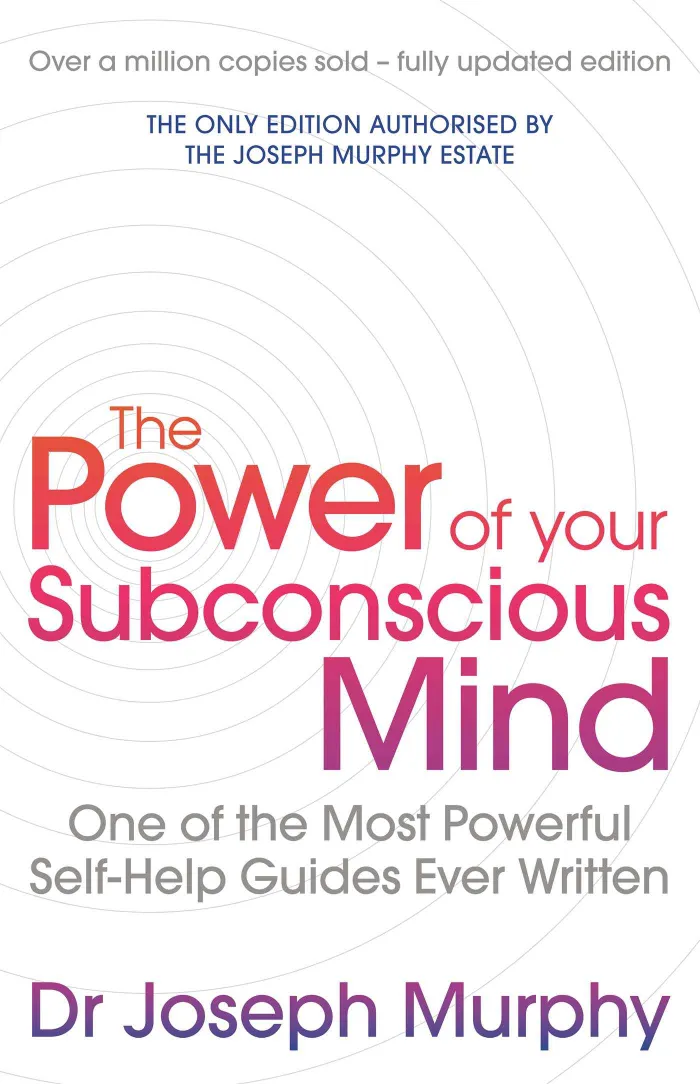The Subconscious Revealed: Navigating Joseph Murphy's Insights

Murphy doesn't treat the subconscious as a mystical black box. Instead, he frames it as a living system of belief and response, one that like soil requires conscious planting and nurturing. What makes this particularly relevant today is how closely it mirrors modern neuroscience.
Image: supplied
I didn’t finish The Power of the Subconscious Mind in one sitting. I wasn’t supposed to. Some books feel like conversations that unfold slowly, over days or even weeks.
Joseph Murphy’s work wasn’t just a book. It was a reorientation. A reframing of reality. A deep breath in the noise of modern life.
When I first picked it up, I expected the usual motivational tone. Instead, I was met with something deeper: a quiet but firm reminder that the stories we believe, especially the ones we don’t realise we’re telling ourselves, shape our lives more than we dare admit. And those stories live not in the conscious mind, but in the subconscious.
Murphy's premise is simple but powerful; the subconscious accepts whatever we repeatedly believe or emotionally internalise, whether helpful or harmful. Once accepted, those beliefs begin to shape our habits, emotional reactions, and even physical health. That idea may have seemed abstract decades ago. Today, science backs it up.
Neuroscience confirms that our brain is constantly processing information beneath the level of conscious awareness. According to Dr. Bruce Lipton, a developmental biologist, 95% of our behaviour is driven by subconscious programming. His work suggests that these deep patterns are largely formed in childhood and continue to run in the background like silent software.
Psychologist Dr. Daniel Kahneman, in his Nobel Prize-winning work Thinking, Fast and Slow, distinguishes between “System 1” (fast, automatic, subconscious thinking) and “System 2” (slow, deliberate, conscious reasoning). His research shows that most of our daily decisions are made by System 1. In other words, we’re often not thinking. We’re reacting from deep programming.
When I realised this, it became deeply personal. I saw how my own reactions to hesitation, people-pleasing, fear of visibility wasn’t flaws. They were well-practised patterns that lived in my subconscious, quietly protecting me from outdated threats.
Reading Murphy’s work alongside contemporary research helped me bridge the spiritual and the scientific. Esther Hicks and the teachings of the Law of Attraction add yet another layer, emphasising emotional resonance. According to that perspective, our emotions are feedback indicators of whether our dominant vibration (or subconscious belief) is aligned with what we want. If fear, lack, or worry dominate, then we attract more of that experience not as punishment, but as reflection.
In practice, I started combining Murphy’s affirmations with visualisation techniques and emotional awareness. I’d picture myself already calm, successful, and free. Then pause and notice how my body responded. Did it tighten? Did a voice say “you don’t deserve that”? That was the subconscious speaking. Instead of overriding it, I began to gently reframe it.
This practice wasn’t about toxic positivity or wishful thinking. It was about consciously choosing what I feed my subconscious, day by day. Neuroscience calls this neuroplasticity, the brain’s ability to rewire through repetition and experience. Over time, those small shifts created space for different choices, clearer boundaries and deeper trust in myself.
Why is this still relevant? Because we live in a world flooded with information but starving for integration. We learn more, scroll more, achieve more and yet often feel disconnected, scattered and unsure. The subconscious doesn’t speak at speed or noise. It responds to clarity, emotion and presence. Most of us are out of sync with that.
Murphy’s work reminds me that healing and transformation don’t come from pushing harder, but from returning inward with intention. The subconscious isn’t a mystery to be feared. It’s a powerful ally, waiting for clearer instructions.
“Change your thoughts, and you change your destiny”—Murphy wrote that long before it became a social media quote.
Now I understand what he meant. It’s not about forcing thoughts. It’s about gently replanting them, watering them with emotion and letting the deeper mind take root.
Some books ask to be read. Others ask to be lived. This one? It asked me to pause, to rewire and to re-meet myself at the level where real change begins.